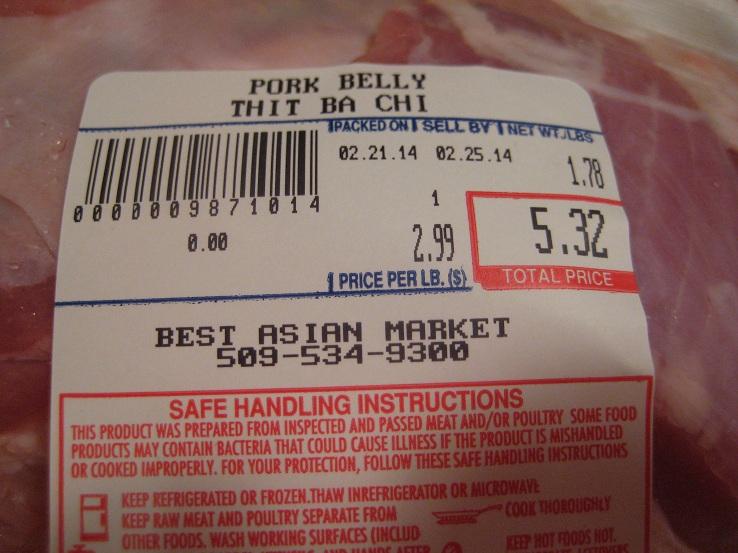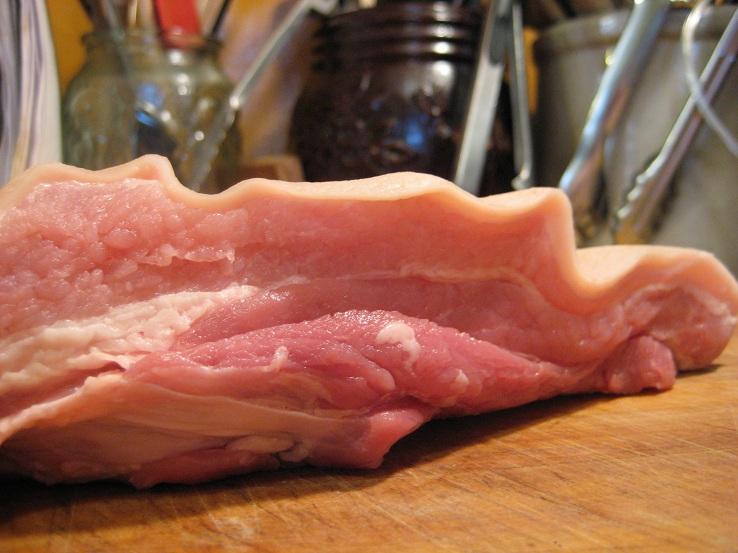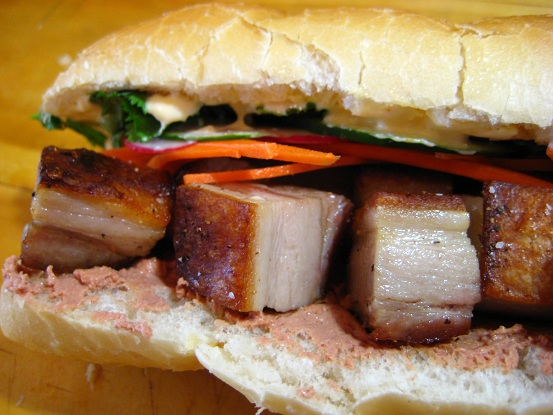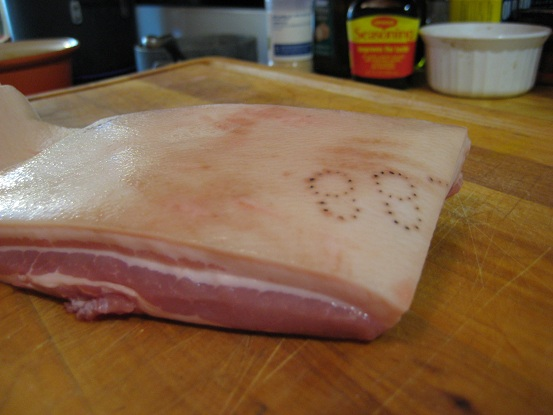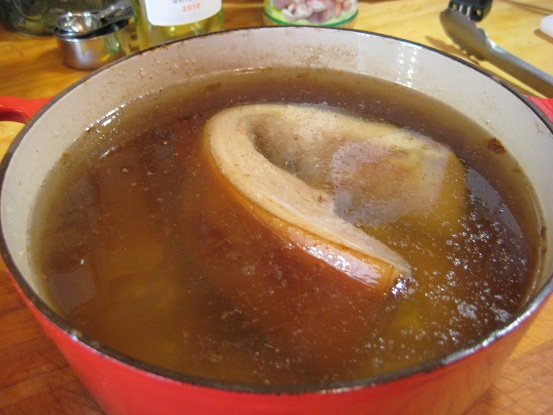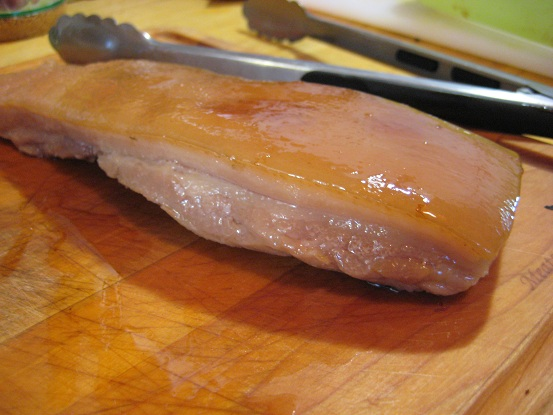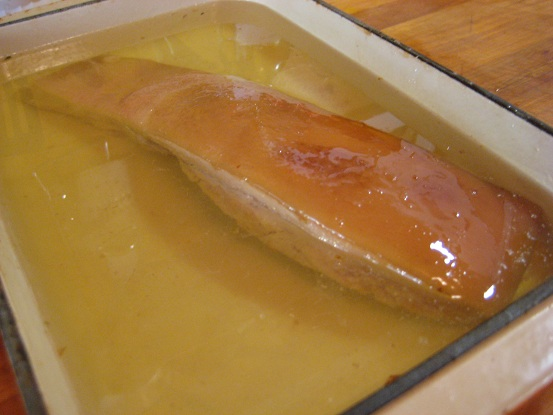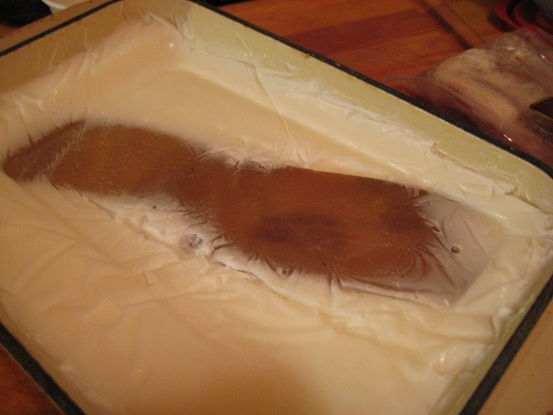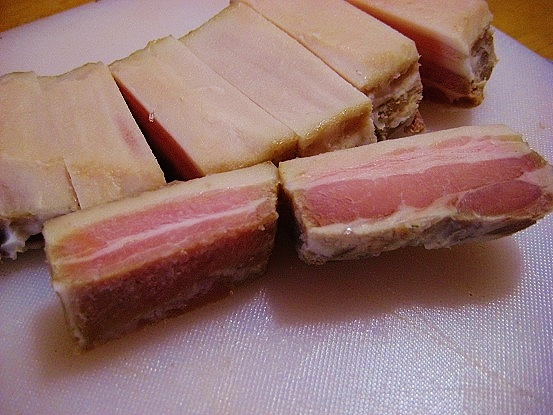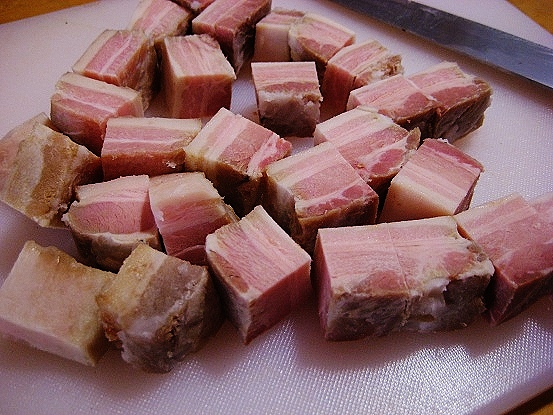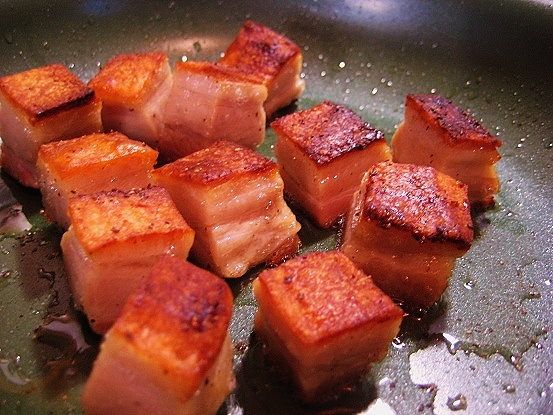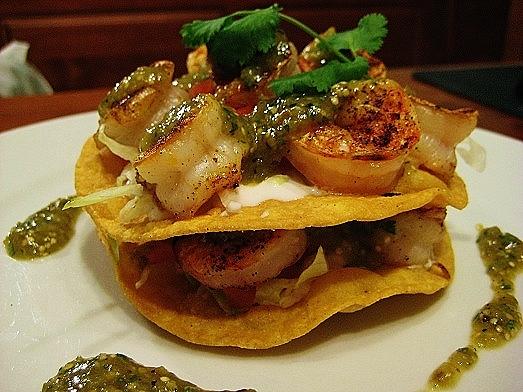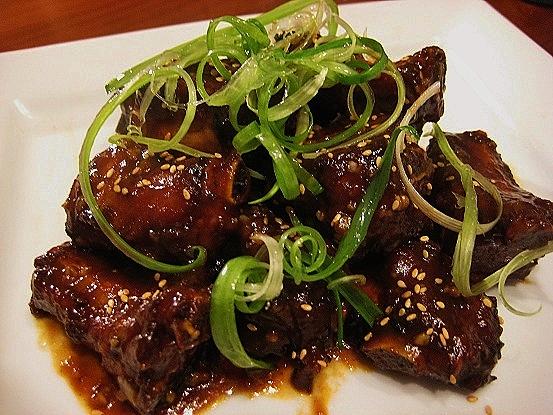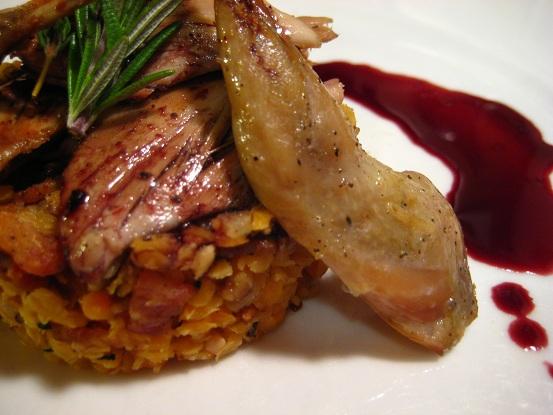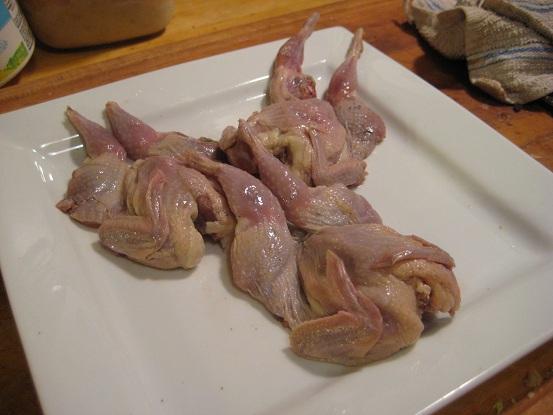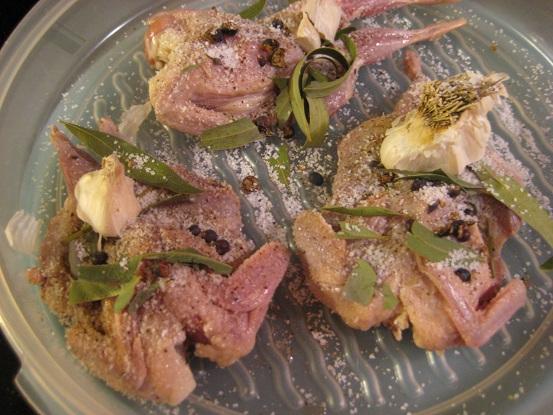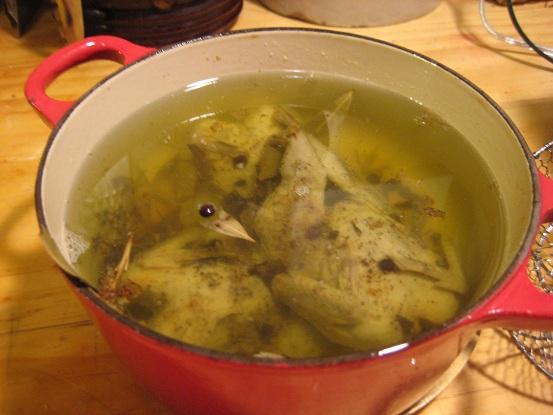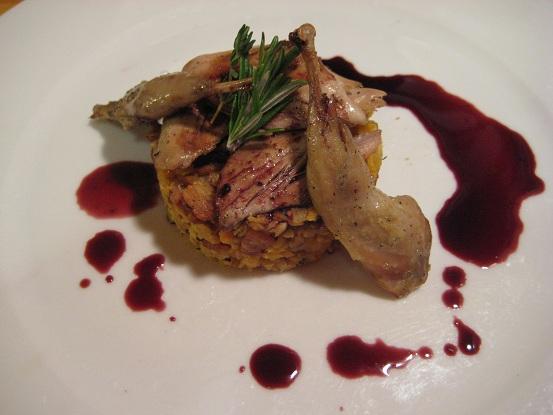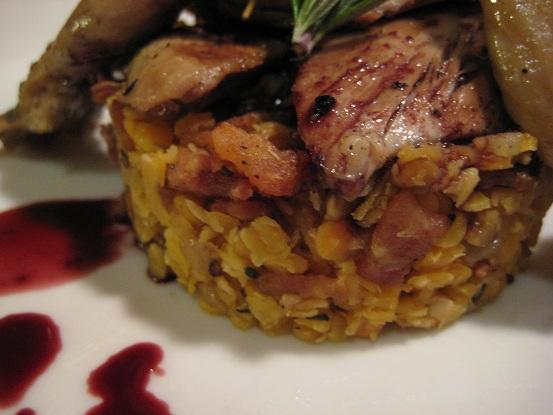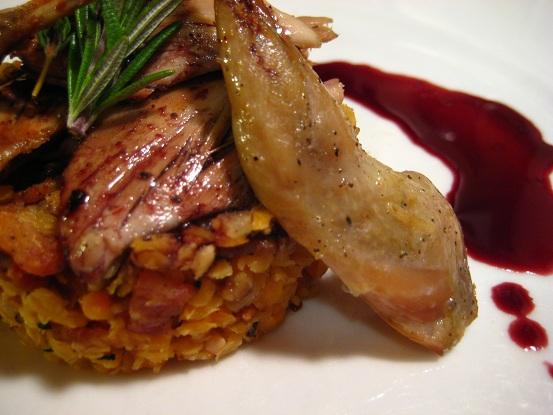-
Posts
5,035 -
Joined
-
Last visited
Content Type
Profiles
Forums
Store
Help Articles
Everything posted by David Ross
-
GQ just released Alan Richman's 2014 edition of the 25 Best New Restaurants in America. What do you think of the list? Have you dined at any of these restaurants? Are "Best New Restaurant" Lists still relevant in today's dining culture? http://www.gq.com/life/eat-and-drink/201403/best-new-restaurants-alan-richman#slide=1
-
Now that is a fabulous pork belly dish.
-
Do you prefer to bake the bacon or pan-fry? I prefer to put the slices on a rack over a cookie sheet and bake in a 400 oven, turning once or twice, until crispy.
-
I took the advice and was at the Asian store when they opened at 9am this morning. The meat case was full of fat, thick, meaty pork belly--at a really good price of $2.99 per pound. For comparison I went online and found two high-end sources for pork belly, both at the $25.00 per pound mark, (without shipping). This fat boy will be bacon in a few weeks, although I don't know if mine will turn out as delicious looking as what Shelby has displayed.
-
Wow Shelby that is a massive pork belly compared to the puny stuff I get. It would be perfect for bacon. Did you just find it at a local market or did you have to ask a butcher to order it for you? If I only lived more close to the land of pork.
-
This weekend I'll start on some bacon.
-
Anyone have any experience with making fried pork rinds from the belly? I was watching a segment on "The Best Thing I Ever Ate" on Cooking Channel and I was pretty much salivating over the fried pork rinds they served at Publican in Chicago. They did show the process but not in enough detail that I could duplicate the recipe. Looks like they use the actual outer rind from the belly, then dehydrate it and then fry it. I really liked the garnish of malt vinegar powder. Any ideas on a source for the powder?
-
-
That looks delicious. Thanks for the great tutuorial.
-
I've only been cooking with pork belly for a few years so recipe box is pretty limited right now. But the one pork belly recipe I've done many times is always a winner--Pork Belly Confit. It's based on a recipe from Thomas Keller's Ad Hoc at Home cookbook. I've used pieces of the finished pork belly in Banh Mi sandwiches, (at our Banh-Mi Cook-Off here http://forums.egullet.org/topic/143083-cook-off-60-banh-mi/page-3), but this rendition of pork belly is also delicious when cut into a larger cube then sauteed to crisp the skin and served with potato puree, pork jus and a huckleberry compote. You could start by brining the pork belly, but I don't think it adds much flavor and by using a "confit" style cooking method the brine won't make the pork any more tender. The tenderness comes from the slow cooking in the fat. Here's a fairly good pork belly to start, thick, meaty and a good layer of fat- I leave the rind, (outer skin), on and then submerge the pork belly in melted lard. Into a 200 oven to slowly cook for 6 hours- Here's porky after the fat bath- Then into a heavy casserole dish, strained fat poured over, then covered and chilled in the fridge for about 4 or 5 days- Then slowly melt the fat again, remove the pork belly and carefully cut off the outer rind. I found that if I left the rind on it was as tough as that shoe leather Charlie Chaplin tried to eat- Then into a hot saute pan to warm up the pork and crisp the skin- It wasn't technically a traditional Banh Mi the way I treated and cut the pork belly, but it sure was good--a good French roll, mayonnaise, cilantro, radish, cucumber, carrot, pork pate and pork belly. I won't stop at Banh Mi with this method of cooking pork belly. Really moist and yet crispy.
-
Looks delicious. Can you give us some details on the cooking steps?
-
That looks delicious. I never would have thought of poaching a pork belly but I will now.
-
It would be an interesting comparison to do a pork belly dish between the two--a heritage breed and a large commercially bred and raised pig. My favorite pork belly dish is done in a "confit" style and I prefer a heavier ratio of fat to meat.
-
So I've had this lingering question about the belly of a pig. The only local market source I have for pork belly is the local Asian market. The pork belly is cheap, but it's also fairly thin and doesn't have a lot of meat. It cooks well and works in certain dishes, but I'd probably never use it to make bacon. -Starting with the pig's family tree, does a heritage breed pig produce a more flavorful pork belly? Or, owing to its nature as a pig with a thick layer of fat, does a heritage breed Berkshire or Kurobuta have a thick enough layer of meat to produce a better belly than the factory-farm Duroc? -Does the thickness of the pork belly make any difference in the final dish?
-
Welcome back to a time-honored, cherished eG tradition, the eG Cook-Off Series. Today were venturing into a new world for Cook-Off's. Member Kerry Beal came forward with a Cook-Off idea we just couldn't pass up--Pork Belly--and inspired a new idea for future Cook-Off's. Knowing we're a community of great culinary minds, we'll be inviting the Members to send us ideas for potential future Cook-Off's, (more information to come later). Take it away Kerry and let's raid the larder and start cookin.
-
-
My favorite method is pork belly confit. It's based on a recipe from Thomas Keller. Takes time to season, cure, cook then preserve the pork belly, but it's worth it. You can follow my steps here: http://forums.egullet.org/topic/146319-eg-cook-off-64-confit/page-2
-
Thanks everyone for referring back to this Cook-Off and pushing out some new idea. I especially like the idea of the "folded" enchilada robirdstix and Paul, your enchilada "duo" looks delicious.
-
Another trick that may help prevent the tortilla's tearing is to warm them slightly between to damp kitchen towels. That small bit of water will soften them just before you start the dipping process.
-
Fried Sweet and Sour Baby Back Ribs. The sauce was based in Worcestershire and ketchup. I know, not really authentic Chinese cuisine but very tasty. The hardest task was cutting the rack of ribs in half to make little riblets.
- 584 replies
-
- 11
-

-
I'm thinking about doing a beef tongue confit. However, I'm not sure how or when I should do the salting stage. Typically I boil tongue first, not only to cook it but to be able to remove the outer skin. If I salt the tongue and let it cure a few days, will the salt penetrate through that thick layer of outer skin? And will the salt then start to cure the meat? I could boil the tongue, remove the skin and then cure it in lard, but I think eliminating that salting stage would rob the tongue of classic confit technique and flavor? Any ideas?
-
Quail Confit with Warm Crimson Lentil Salad with Bacon and Onion, Red Wine Sauce. Just one of the dishes that's a part of our Confit Cook-Off, (http://forums.egullet.org/topic/146319-eg-cook-off-64-confit/page-3#entry1946497)-
-
Tonight I finished the Quail Confit dish. Started with Quail that I buy at the local Asian grocery store. Six quail sell for about $10.00, an incredible buy and the only place in town where I can buy quail. Frozen by the way. The the same basic method as the chicken confit-heavily seasoned with Kosher salt, then black pepper, bay leaf, garlic, black pepper and crushed juniper berries. The quail sits in the fridge for two days. The quail is slowly roasted in pork lard in a 200-225 oven for about 4 hours. Then refrigerated in the fat for one week. Before serving tonight I reheated the quail in the oven to melt the fat. Then very gently removed the quail from the fat, separated the legs and thighs to garnish the plate. Pulled the breast meat off the carcass and sauteed to heat it through. Served with a warm salad of crimson lentils, (locally harvested in Montana), with bacon, onion and apple cider vinegar. Then a drizzle of red wine sauce over the quail and around the plate. A pretty good dish, especially the warm lentil salad. You could toss the confit in the salad and it would be fabulous. The quail confit was good, but I must say I now prefer the chicken. In fact, I think I prefer chicken over duck and quail for confit.
-
I for one think the discussion and use of sous-vide and more modern techniques for crafting confit has been a great learning experience for an old tradionalist like me.
-
A wonderful review written in an oft-forgotten but still beloved tone. Thanks for sharing your thoughts.



